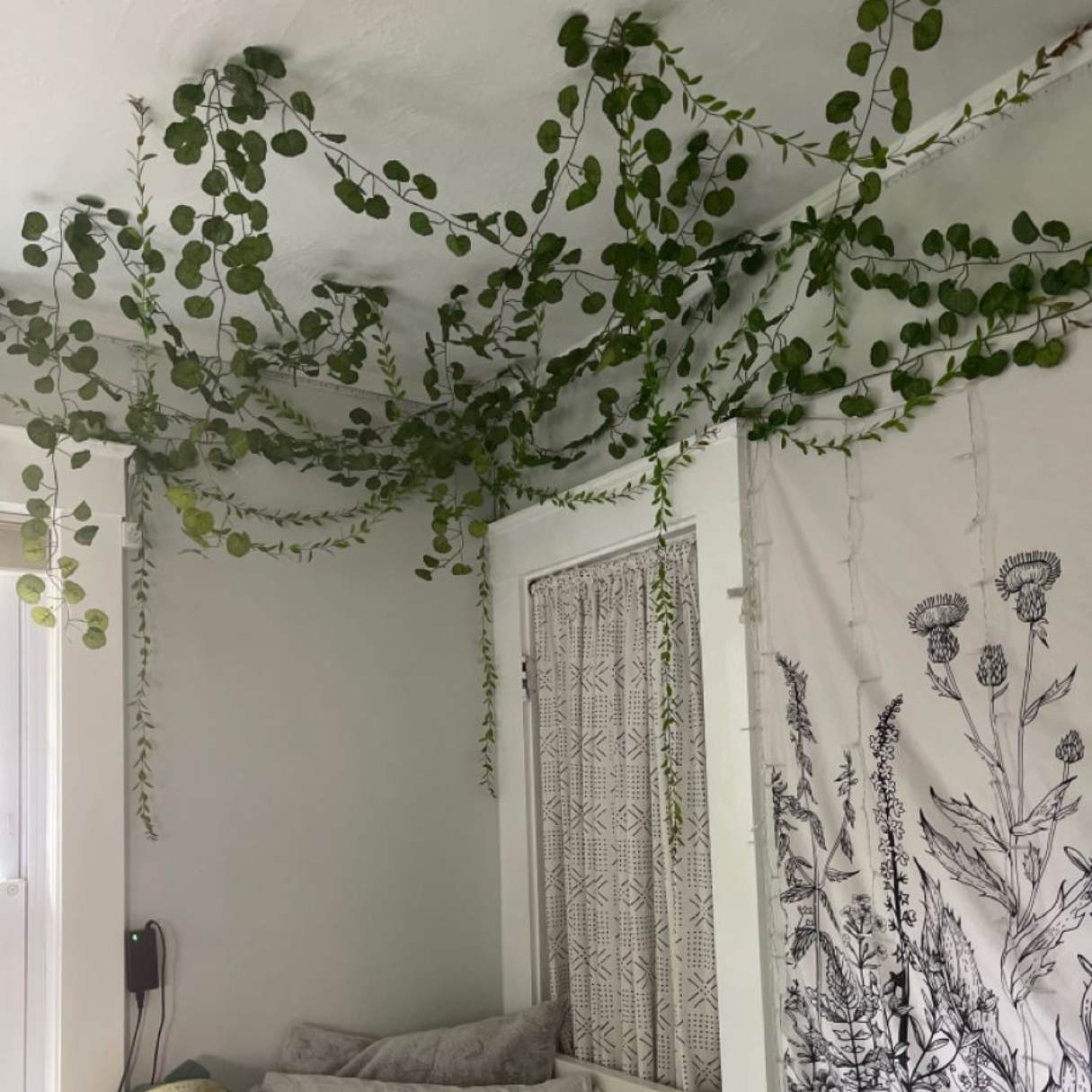

Articles
How To Hang Vines From The Ceiling
Modified: May 6, 2024
Learn how to hang vines from the ceiling with our helpful articles. Transform your space with these simple steps and create a lush indoor oasis.
(Many of the links in this article redirect to a specific reviewed product. Your purchase of these products through affiliate links helps to generate commission for Storables.com, at no extra cost. Learn more)
Introduction
Adding greenery to your living space can greatly enhance its aesthetic appeal and create a calming atmosphere. One unique way to bring some nature indoors is by hanging vines from the ceiling. Not only does this create a beautiful visual effect, but it also allows the plants to cascade down, adding depth and dimension to your room. In this article, we will guide you through the process of hanging vines from the ceiling, from choosing the right vines to properly installing them. So let’s dive in and turn your ceiling into a lush, green oasis!
Key Takeaways:
- Create a lush oasis by hanging vines from the ceiling, adding unique charm and natural beauty to your living space. Choose the right vine, prepare the ceiling, and care for your hanging vines to create a stunning green sanctuary.
- Transform your room into a green sanctuary by hanging vines from the ceiling. Select the perfect vine, prepare the ceiling, and maintain your hanging vines to create a visually stunning and calming atmosphere.
Read more: How To Hang Ornaments From The Ceiling
Choosing the Right Vine
When it comes to hanging vines from your ceiling, selecting the right type of plant is crucial for its success and longevity. Here are a few factors to consider when choosing the perfect vine for your space:
- Light Requirements: Different vine species have varying light requirements. Assess the lighting conditions in your room and choose a vine that matches those needs. Some popular choices for low-light conditions include pothos, heartleaf philodendron, and Chinese evergreen.
- Growth Habit: Consider whether you prefer a trailing or climbing vine. Trailing vines work best for ceilings with ample vertical space, allowing the plant to gracefully cascade downwards. Climbing vines, on the other hand, cling to vertical surfaces and are ideal for creating a dramatic effect along the walls or pillars.
- Pot Size: Determine the size of the pot your vine will reside in. The pot should fit well with the space you have available and complement the aesthetics of your room. Remember that as the vine grows, it may require repotting, so choose a vine that can adapt to different pot sizes.
- Maintenance: Consider the level of maintenance required for the vine you choose. Some vines are low-maintenance and require minimal care, making them ideal for those who have busy schedules or are new to indoor gardening. Others may require more attention, such as regular pruning or specific humidity levels.
Remember to research each vine species thoroughly, paying attention to their growth habits, watering needs, and any specific care instructions. This will ensure you select a vine that not only complements your space but also thrives in the conditions you can provide.
Preparing the Ceiling
Before you begin hanging the vines, it’s important to properly prepare your ceiling to ensure a secure and stable installation. Follow these steps to prepare the ceiling:
- Clean the Ceiling: Start by cleaning the ceiling surface to remove any dirt, dust, or cobwebs. Use a soft cloth or a mild cleaning solution to gently wipe away any grime that may affect the adhesive strength of the hooks or anchors.
- Assess the Ceiling Material: Determine the type of material your ceiling is made of. This information will help you choose the appropriate hooks or anchors for a secure installation. Common ceiling materials include drywall, plaster, or concrete.
- Locate Ceiling Joists: If you have a drywall or plaster ceiling, use a stud finder to locate the ceiling joists. These are the sturdy beams behind the ceiling that provide support. Hanging your vines directly from the ceiling joists will ensure a strong and stable installation.
- Mark Anchor Points: Once you have located the ceiling joists or determined the appropriate spots for hanging your vines, use a pencil to mark the anchor points. This will serve as a guide when installing the hooks or anchors.
By properly preparing your ceiling, you will create a solid foundation for hanging your vines. This will not only ensure the safety and stability of the installation but also prevent any damage to your ceiling or the plants in the long run.
Installing Hooks or Anchors
After preparing the ceiling, it’s time to install the hooks or anchors from which your vines will hang. Follow these steps to ensure a secure installation:
- Select the Right Hooks or Anchors: Depending on your ceiling type, choose the appropriate hooks or anchors that will support the weight of your vines. For drywall ceilings, consider using screw-in hooks or adhesive hooks specifically designed for hanging plants. For concrete or plaster ceilings, plastic anchors or toggle bolts may be necessary.
- Measure and Mark: Using the anchor points you marked during the ceiling preparation, measure and mark the exact spot where you will install the hooks or anchors. Use a level to ensure that they are aligned and straight.
- Install the Hooks or Anchors: Follow the manufacturer’s instructions to install the hooks or anchors. If using screws, use a drill or screwdriver to secure them tightly into the marked spots. For adhesive hooks, simply peel off the backing and press them firmly onto the surface. Make sure they are firmly attached and can support the weight of your vines.
- Allow for Proper Drying or Curing: Depending on the type of adhesive used, you may need to allow a specific amount of time for it to dry or cure. This will ensure maximum adhesion and stability once you hang the vines.
When installing hooks or anchors, it’s essential to follow the manufacturer’s instructions and use the appropriate tools and techniques. This will ensure a safe and secure installation, giving you peace of mind as you hang your beautiful vines from the ceiling.
Use clear fishing line to hang vines from the ceiling for a floating effect. Attach the line to the ceiling using hooks or adhesive tabs, and gently wrap the vine around the line for a natural look.
Attaching the Vine to the Ceiling
Now that you have prepared the ceiling and installed the hooks or anchors, it’s time to attach the vines and bring life to your space. Follow these steps to securely hang your vines from the ceiling:
- Prepare the Vine: Before attaching the vine, make sure it’s well-watered and healthy. This will help the plant adjust to its new hanging position and reduce stress.
- Attach the Vine: Gently place the vine near the hook or anchor and adjust the length accordingly. If you have a trailing vine, let it drape down naturally, allowing it to create a stunning cascading effect. If you have a climbing vine, gently guide the stems towards the wall or pillar for it to latch onto.
- Securing the Vine: Depending on the type of vine or the desired effect, you can secure it to the hook or anchor using floral wire, twine, or plant ties. Be careful not to tie the vine too tightly, as this can restrict growth and cause damage.
- Arrange and Shape the Vine: Once your vine is attached, take the time to arrange and shape it to your liking. This will help create a more visually appealing display and allow the vine to thrive in its new hanging position.
It’s important to note that as your vine grows, you may need to adjust its position or trim any excess growth. Regularly check for any signs of stress, such as yellowing leaves or stunted growth, and make the necessary adjustments to ensure the health and vitality of your hanging vines.
Read more: How To Hang Tablecloths From The Ceiling
Maintaining and Caring for the Hanging Vines
Proper maintenance and care are essential for the health and longevity of your hanging vines. Follow these tips to ensure that your plants thrive:
- Watering: Each vine species has different watering needs. Some prefer to dry out slightly between waterings, while others prefer consistently moist soil. Research the specific watering requirements of your vines and water accordingly. Avoid overwatering, as this can lead to root rot.
- Lighting: Ensure that your hanging vines receive adequate light as per their requirements. Place them near a window where they can receive bright, indirect sunlight. Rotate the position of the vines occasionally to ensure even exposure to light.
- Pruning: Regular pruning helps maintain the shape and health of your vines. Trim any dead or yellowing leaves and remove any excessive growth that may weigh down the vine. Pruning encourages new growth and helps maintain a neat appearance.
- Fertilizing: Depending on the specific needs of your vine, you may need to fertilize it occasionally. Use a balanced liquid houseplant fertilizer following the manufacturer’s instructions. Avoid over-fertilizing, as this can cause salt build-up in the soil.
- Monitoring Humidity: Some vines thrive in higher humidity levels. If your room has low humidity, consider using a humidifier or placing a tray filled with water near the vines to increase humidity. Mist the leaves occasionally to provide additional moisture.
- Checking for Pests: Regularly inspect your hanging vines for any signs of pests, such as spider mites or aphids. If you notice any infestation, treat the plants accordingly using organic pest control methods or insecticidal soap.
- Regular Maintenance: Stay attentive to the needs of your hanging vines and address any issues promptly. Monitor their growth and adjust their position as necessary. Keep an eye out for any changes in the plant’s health or appearance, and take action accordingly.
By providing proper care and maintenance, your hanging vines will flourish and bring beauty to your space for years to come.
Conclusion
Hanging vines from the ceiling is a fantastic way to bring the beauty of nature into your living space while adding a touch of uniqueness and charm. With the right vine selection, proper preparation, and careful installation, you can create a stunning display that transforms your room into a lush oasis.
When choosing the right vine, consider factors such as light requirements, growth habit, and maintenance needs. Prepare your ceiling by cleaning the surface and identifying the appropriate anchor points. Install hooks or anchors that suit your ceiling type, ensuring a secure and stable hanging structure.
Attach your vines to the ceiling, taking care to position them to create the desired cascading or climbing effect. Secure the vines gently using floral wire, twine, or plant ties. Regularly maintain and care for your hanging vines by watering, providing adequate lighting, pruning, fertilizing, monitoring humidity levels, and checking for pests.
Remember, each vine is unique, and it’s essential to research the specific needs of your chosen plant. With proper maintenance and care, your hanging vines will thrive and continue to beautify your space for years to come.
So, start exploring different vine options, prepare your ceiling, and let your creativity flourish as you transform your living space into a green sanctuary with the enchanting presence of hanging vines.
Now that your ceiling boasts a stunning array of vines, why not dive into more creative endeavors around your home? Our guide on DIY home projects offers smart, easy-to-follow advice for crafting unique items that reflect your personal style. Whether you're looking to spruce up your living space or tackle functional fixes, this article provides all the necessary steps to get started on fulfilling, hands-on activities that turn your home improvements into enjoyable experiences.
Frequently Asked Questions about How To Hang Vines From The Ceiling
Was this page helpful?
At Storables.com, we guarantee accurate and reliable information. Our content, validated by Expert Board Contributors, is crafted following stringent Editorial Policies. We're committed to providing you with well-researched, expert-backed insights for all your informational needs.
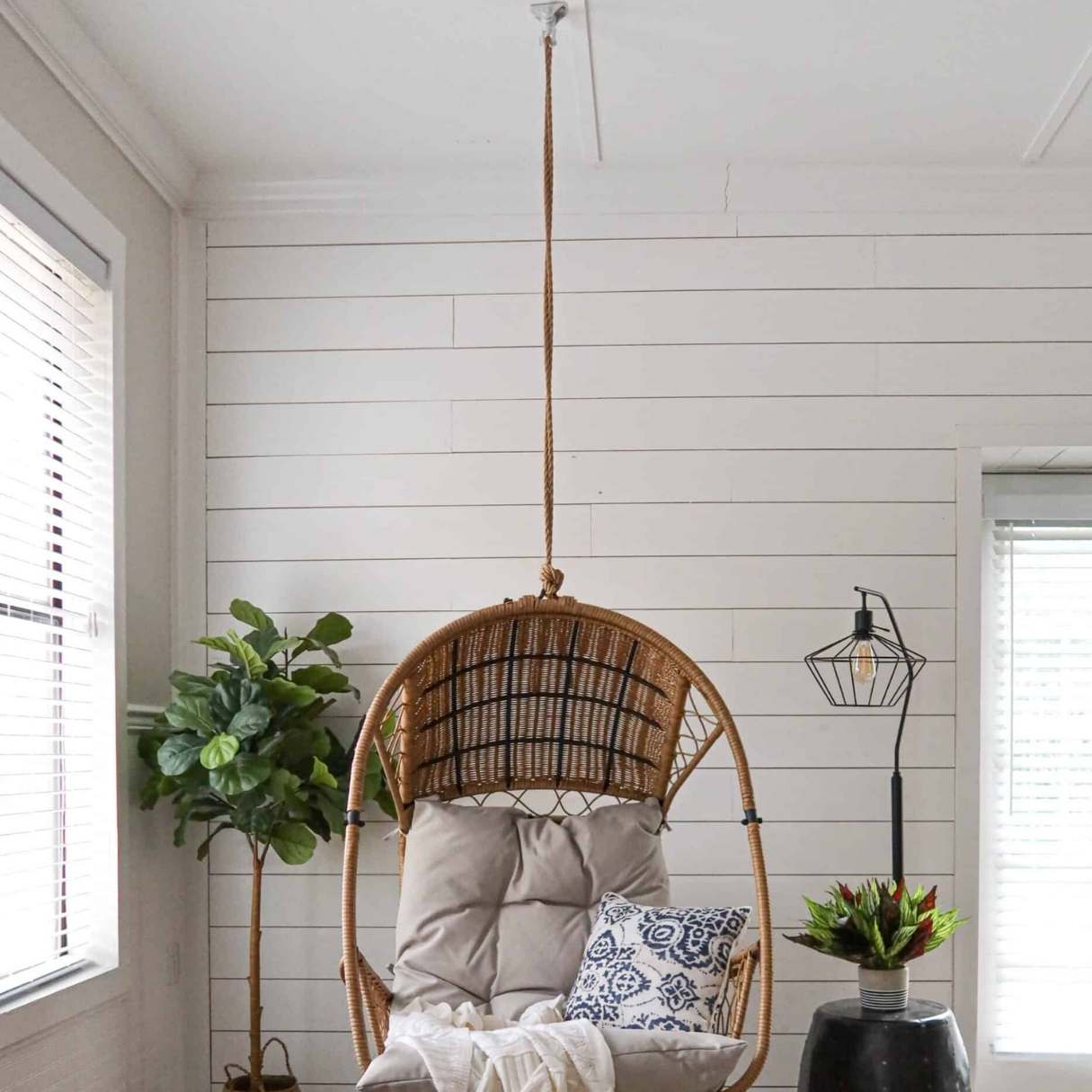









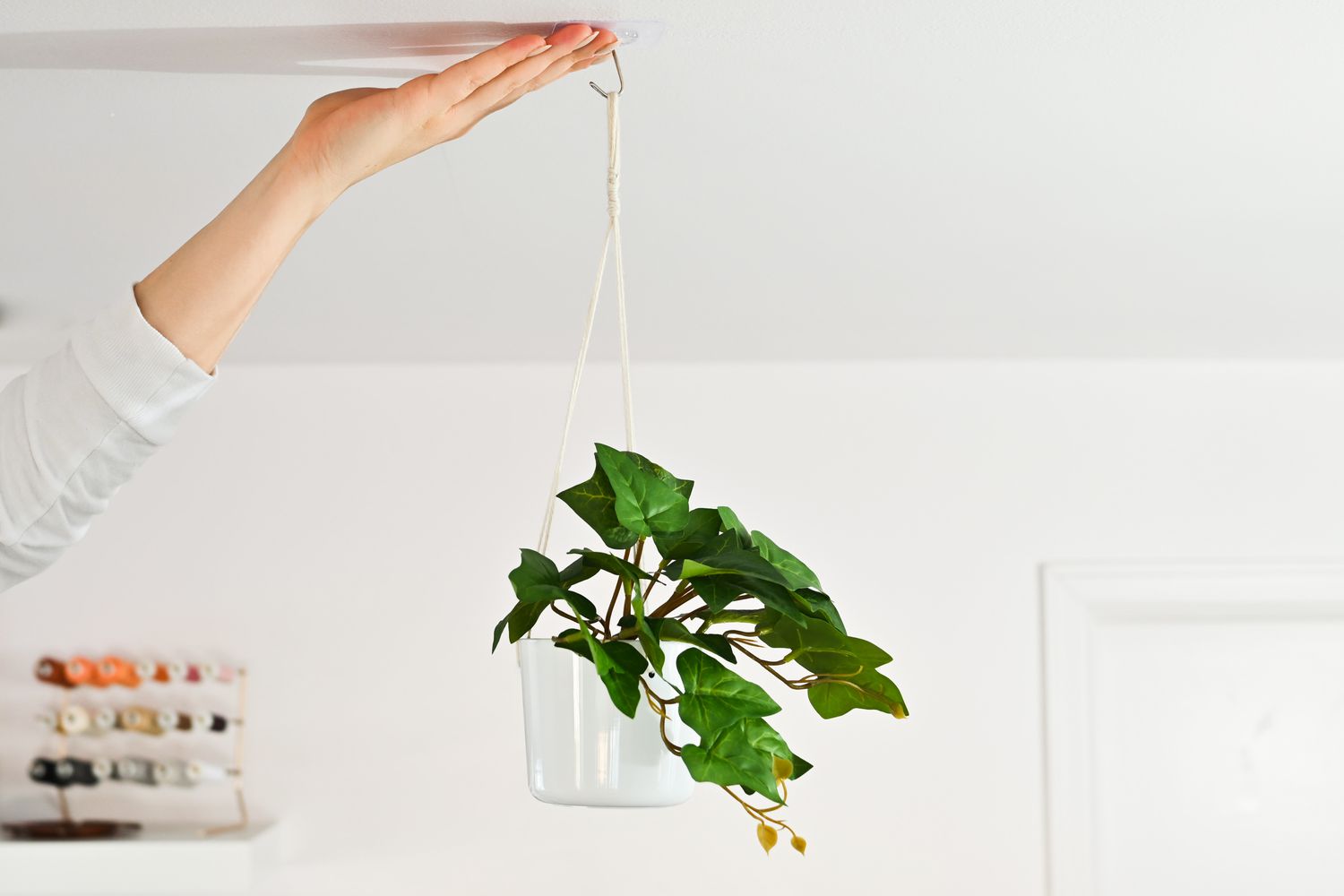
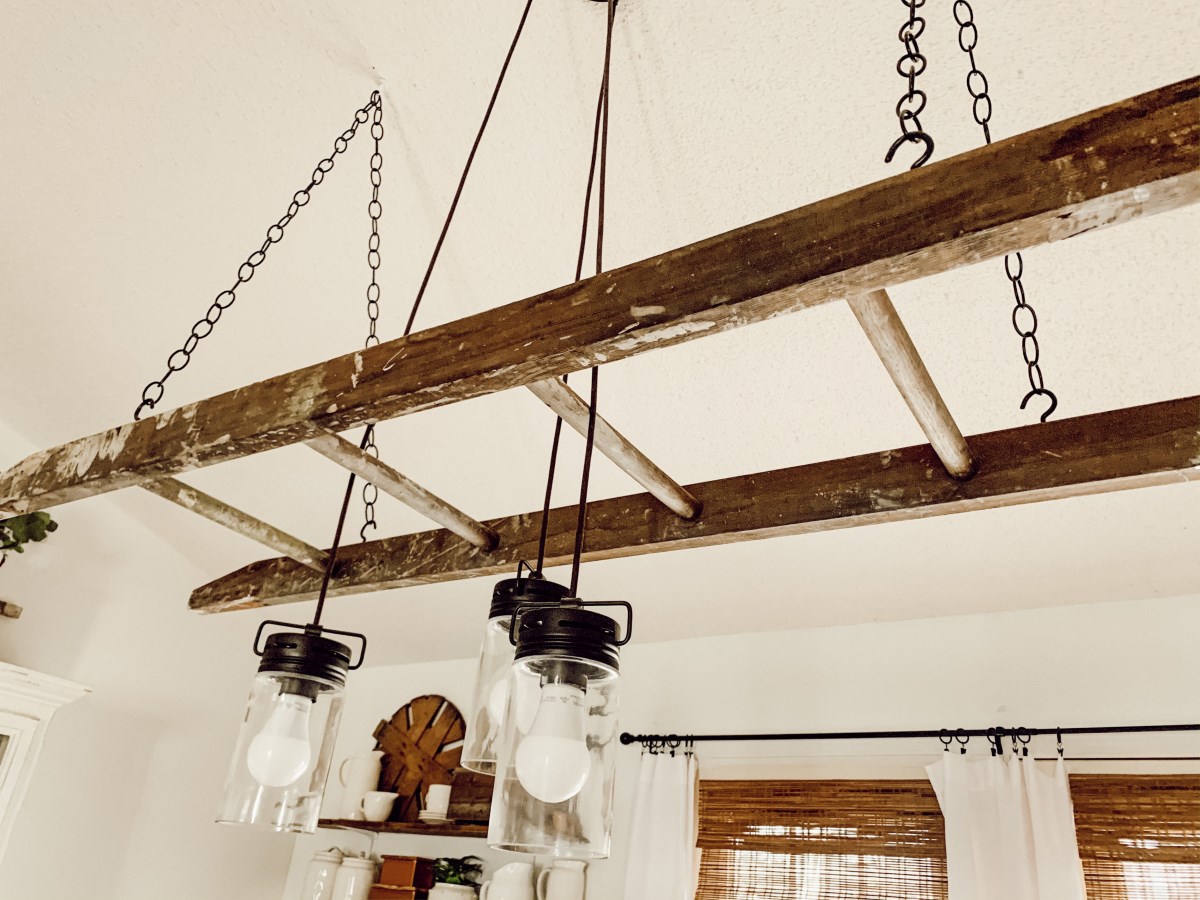

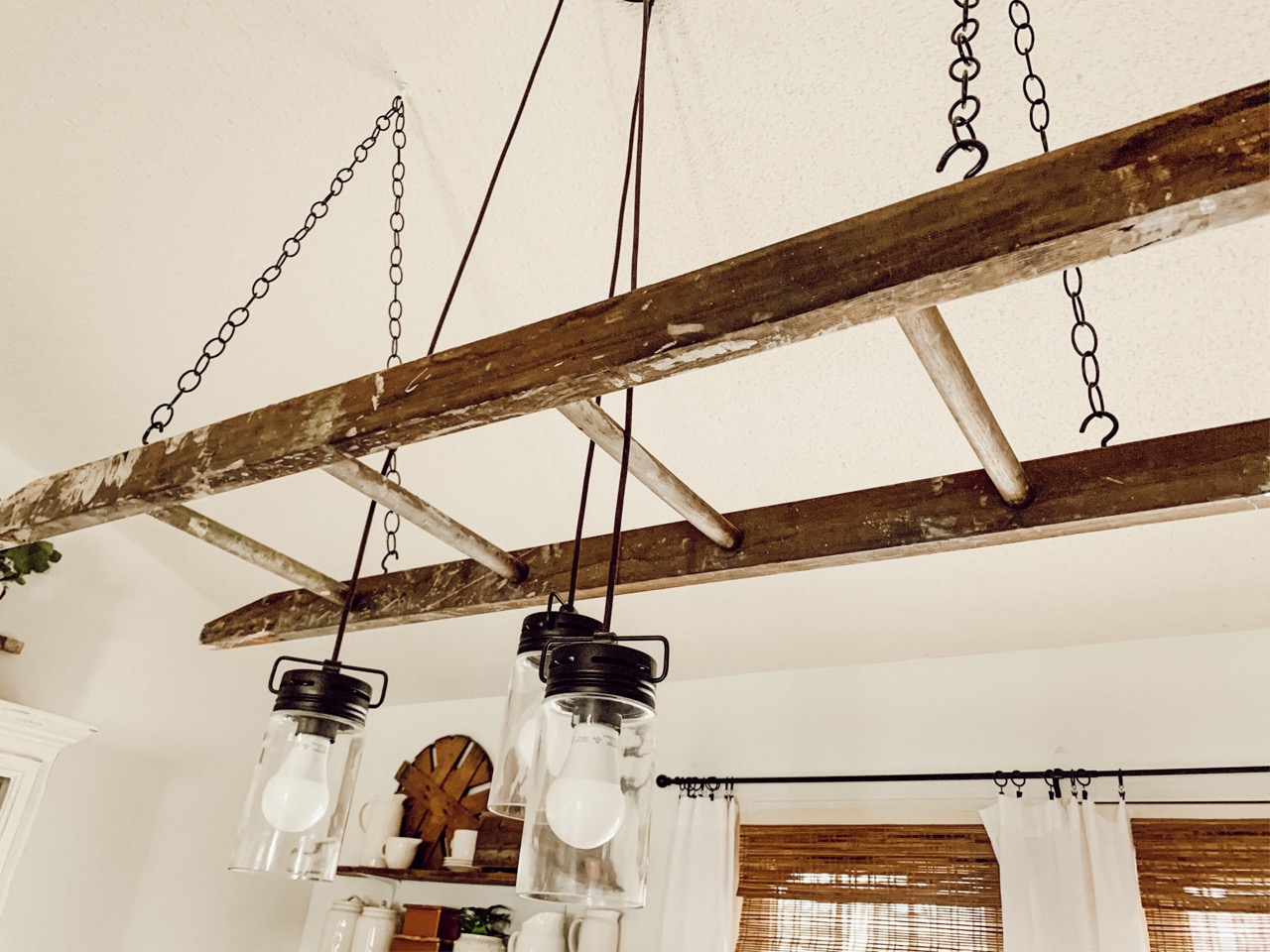

0 thoughts on “How To Hang Vines From The Ceiling”